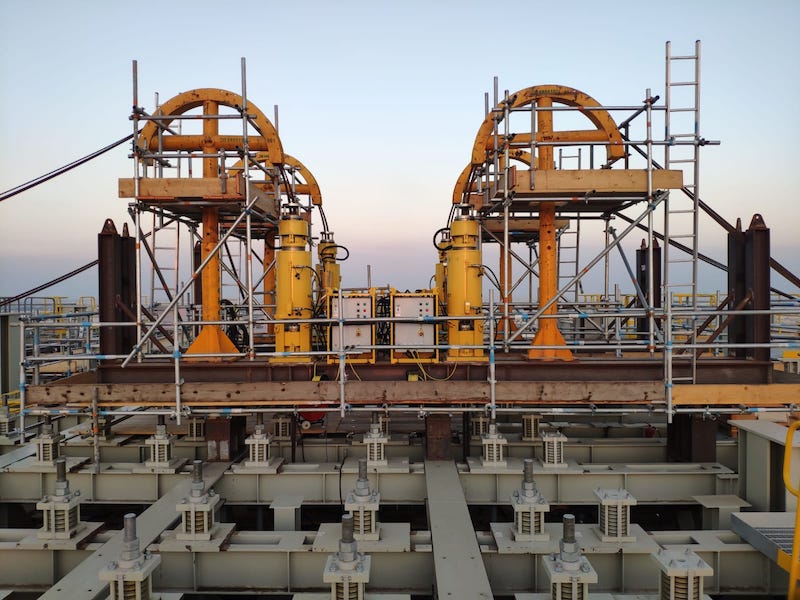One of the leading Turkish heavy lifting company, Hareket, used Enerpac strand jacks to install superheater and vaporisation modules at the first United Arab Emirates waste-to-energy (WTE) facility in Sharjah. Hareket undertook all heavy lift engineering and supervision of the strand jacking works. This involved installing two temporary lifting platforms each featuring two Enerpac 200 ton capacity strand jacks per platform. The strand jacks were used to lift eight 77T superheaters and two 20T vaporizer modules up to 30 metres. Accurate positioning of the 16m high modules was synchronized by a single operator using a wireless controller on each platform.
The 200-ton capacity Enerpac strand jack acts like a linear winch. A bundle of steel cables or strands are guided through a hydraulic cylinder; above and below the cylinder are anchor systems with wedges that grip the strand bundle. By stroking the cylinder in and out while the grips are engaged in the anchors, a lifting or lowering movement is achieved. The motion of the cylinders is driven by hydraulic power packs. The Enerpac SCC software program synchronizes the motion of the strand jacks and adjusts the motion to the loads per lifting point.
“This was our first deployment of the Enerpac strand jacks, and they performed very well,” says Samet Gürsu, Operations Director, Hareket Heavy Lifting & Project Transportation Co. “It demonstrated the flexibility and innovation that Hareket brings to heavy lift projects where a traditional lifting methods are impractical.”
The Sharjah waste-to-energy facility will process around 37.5 tonnes of municipal solid waste per hour and will be located adjacent to the existing Bee’ah’s existing Material Recovery Facility inside the Bee’ah Waste Management Complex in Sharjah, where the Emirate’s waste is collected, sorted and recycled and residual waste is sent to landfills. The project is also estimated to offset approximately 450,000t of CO2 emissions and substitute the use of 45 million m³ of natural gas a year.







